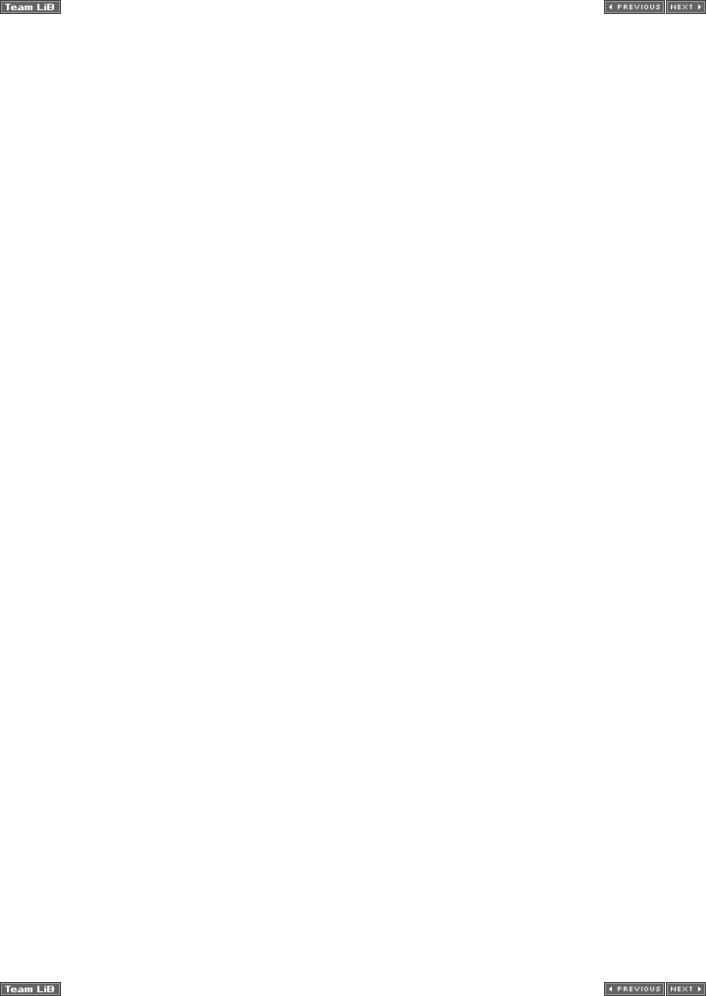
- •Table of Contents
- •Foreword
- •Acknowledgments
- •Introduction
- •Keywords
- •Chapter 1: The Power of Persuasion
- •Persuasion: The Heartbeat of Our Economy
- •Used for You or Against You
- •When You Have the Right Tools You Will Succeed
- •Definitions
- •Persuasion and Rhetoric
- •The Foundational Principles of Persuasion
- •Twelve Automatic Triggers of Persuasion
- •Thinking About Not Thinking
- •The Twelve Laws of Persuasion
- •Two Paths of Persuasion
- •The Theory of Cognitive Dissonance
- •Methods of Protecting Mental Consistency
- •Using Dissonance to Create Action
- •The Law of Dissonance in Marketing
- •Cognitive Dissonance and Public Commitment
- •Getting Your Foot in the Door
- •Three Steps to Using the Law of Dissonance
- •Chapter 4: The Law of Obligation--How to Get Anyone to Do a Favor for You
- •Definition of the Law of Obligation
- •The Law of Obligation and Marketing
- •Fundraising and the Law of Obligation
- •Applying the Law of Obligation
- •Reciprocal Concessions
- •Give a Favor, Expect a Favor in Return
- •Secrets Create Obligation: The Secret of Secrets
- •Caution
- •Attraction: The Halo Effect
- •Similarity: Similar Is Familiar
- •People Skills: Winning Instant Acceptance from Others
- •Rapport: The Instant Connection
- •Going with the Crowd
- •The Law of Social Validation at Work
- •Social Validation: The Power of the Group
- •The Dark Side of Social Validation
- •Social Validation and Conformity or Groupthink
- •Social Validation and Marketing
- •Making Social Validation Work
- •Why Scarcity Drives Us Wild
- •The Law of Scarcity in Marketing
- •How to Use the Law of Scarcity
- •The Inherent Power of Words
- •The Fundamentals of Language Usage
- •Word Choice
- •Dental Verbal Packaging
- •Types of Contrast
- •How to Use the Law of Contrast
- •Expectations as Assumptions: Expect with Confidence
- •Expectations of Others Affect Behavior
- •Presupposition: Assuming the Sale
- •The Placebo Effect: Persuasive Suggestions
- •Time Expectations
- •Reputation Expectations
- •First Impression Expectations
- •Embedded Commands
- •Goal Setting: Creating Personal Expectations
- •Environment
- •Pacing and Leading
- •Increasing Participation
- •Creating Atmosphere
- •Maintaining Attention
- •Using the Art of Questioning
- •Telling Mesmerizing Stories
- •Repeating and Repackaging
- •Building Suspense and Distraction
- •Generating Competition
- •Engaging the Five Senses
- •Self-Esteem
- •Pride
- •Ingratiation: Make Others Feel Important
- •The Leverage of Praise
- •Acceptance
- •The Amazing Power of Endorsements
- •Anchors: Capture the Feeling
- •Affiliation: Create the Link
- •Use Association to Persuade and Influence
- •Logic: What Stirs an Audience
- •Common Logical Fallacies
- •Evidence and Logic
- •Compelling Evidence
- •Types of Emotions: Emotional Mastery
- •Tip the Scale
- •Monitoring the Ability to Change: Getting Inside the Closed Mind
- •Monitoring Your Listening Skills: Crack the Code
- •Structuring Winning Arguments
- •Giving a Call to Action
- •Structure Points
- •Inoculation: Defend Against the Attack
- •Preparation Is the Key to Influence
- •Epilogue
- •Notes
- •Chapter 3
- •Chapter 4
- •Chapter 5
- •Chapter 6
- •Chapter 7
- •Chapter 8
- •Chapter 9
- •Chapter 10
- •Chapter 11
- •Chapter 12
- •Chapter 13
- •Chapter 14
- •Index
- •List of Sidebars

Chapter 6
1.Sharon Brehm, Saul Kassin, and Steven Fein, Social Psychology (New York: Houghton Mifflin, 1999), p. 213.
2.Douglas Rushkoff, Coercion: Why We Listen to What They Say (New York: Riverhead Books, 1999), p. 123.
3.M. Sherif, The Psychology of Social Norms (New York: Harper, 1936).
4.A. Tesser, J. Campbell, and S. Mickler, ‘‘The Role of Social Pressure, Attention to the Stimulus, and Self-Doubt in Conformity,’’ European Journal of Social Psychology, (1983): 217–233.
5.D. L. Altheide and J. M. Johnson, ‘‘Counting Souls: A Study of Counseling at Evangelical Crusades,’’ Pacific Sociological Review (1977): 323–348.
6.Craig Soderholm, How 10% of the People Get 90% of the Pie (New York: St. Martin, 1997), p. 69.
7.I. Sarason, G. Sarason, E. Pierce, B. Sherin, and M. Sayers, ‘‘A Social Learning Approach to Increasing Blood Donations,’’ Journal of Applied Social Psychology (1991): 21.
8.A. Bandura, J. E. Grusec, and F. L. Menlove, ‘‘Vicarious Extinction of Avoidance Behavior,’’ Journal of Personality and Social Psychology 5 (1967): 16–23.
9.A. Bandura and F. L. Menlove, ‘‘Factors Determining Vicarious Extinction of Avoidance Behavior Through Symbolic Modeling,’’ Journal of Personality and Social Psychology 8 (1968): 99–108.
10.S. Asch, ‘‘Forming Impression of Personality,’’ Journal of Abnormal and Social Psychology (1946): 258–290.
11.R. Fuller and A. Sheehy-Skeffington, ‘‘Effects of Group Laughter on Responses to Humorous Materials: A Replication and Extension,’’ Psychological Reports (1974): 531–534.
12.T. Nosanchuk and J. Lightstone, ‘‘Canned Laughter and Public and Private Conformity,’’ Journal of Personality and Social Psychology (1974): 153–156.
13.S. Milgram, L. Bickman, and L. Berkowitz, ‘‘Note on the Drawing Power of Crowds of Different Size,’’
Journal of Personality and Social Psychology (1969): 79–82.
14.S. Fein, G. R. Goethals, S. M. Kassin, and J. Cross, ‘‘Social Influence and Presidential Debates,’’ American Psychological Association, Toronto, Canada, 1993.
15.Kurt Lewin, ‘‘Forces Behind Food Habits and Methods of Change,’’ Bulletin of the National Research Council 108 (1943): 35–65.
16.M. Gansberg, ‘‘37 Who Saw Murder Didn’t Call the Police,’’ New York Times, March 27, 1964, p. 1.
17.B. Latane and J. Rodin, ‘‘A Lady in Distress: Inhibiting Effects of Friends and Strangers on Bystander Intervention,’’ Journal of Experimental Social Psychology (1969):189–202.
18.L. Festinger, A. Pepitone, and T. Newcomb, ‘‘Some Consequences of Deindividuation in a Group,’’ Journal of Abnormal Social Psychology (1952): 382– 389.

19.E. Diener, ‘‘Deindividuation: The Absence of Self-Awareness and Self-Regulation in Group Members,’’ in The Psychology of Group Influence, P. B. Paulus, editor (Hillsdale, N.J.: Erlbaum, 1980), pp. 209–242.
20.E. Diener, S. C. Fraser, A. L. Beaman, and R. T. Kelem, ‘‘Effects of Deindividuation Variables on Stealing Among Halloween Trick-or-Treaters,’’ Journal of Personality and Social Psychology (1976): 178–183.
21.M. Cody, J. Seiter, and Y. Montague-Miller, Men and Womanin th eMarketplace: Gender Power and Communication in Human Relationships (Hillsdale, N.J.: Erlbaum, 1995), pp. 305–329.
22.Cavett Robert, Personal Development Course (Englewood Cliffs, N.J.: Prentice Hall, 1966).
23.Festinger, Pepitone, and Newcomb, ‘‘Some Consequences of Deindividuation.’’

Chapter 7
1.See http://www.usatoday.com/life/special/jackie/ljack000.htm
2.A. Pratkanis and E. Aronson, Age of Propaganda (New York: W. H. Freeman, 1991), p. 188.
3.S. Brehm and J. Brehm, Psychological Reactance: A Theory of Freedom and Control (New York: Academic Press, 1981).
4.F. Rhodewalt and J. Davison, ‘‘Reactance and the Coronary-Prone Behavior Pattern: The Role of Self-Attribution in Response to Reduced Behavioral Freedom,’’ Journal of Personality and Social Psychology (1983): 44.
5.J. Brehm and M. Weintraub, ‘‘Physical Barriers and Psychological Reactance: Two-Year-Olds Response to Threats to Freedom,’’ Journal of Personality and Social Psychology 35 (1977): 830–836.
6.Thomas Hammock and Jack W. Brehm, ‘‘The Attractiveness of Choice Alternatives When Freedom to Choose Is Eliminated by a Social Agent,’’ Journal of Personality 34 (1966): 546–554.
7.A. Tversky and D. Kahneman, ‘‘The Framing of Decisions and the Psychology of Choice,’’ Science (1981): 453–-458.
8.M. Gonzales, E. Aronson, and M. Costanzo, ‘‘Increasing the Effectiveness of Energy Auditors: A Field Experiment,’’ Journal of Applied Social Psychology (1988): 1046–1066.
9.S. Worchel, J. Lee, and A. Adewole, ‘‘Effects of Supply and Demand on Ratings of Object Value,’’ Journal of Personality and Social Psychology (1975): 906– 914.
10.M. Mazis, ‘‘Antipollution Measures and Psychological Reactance Theory: A Field Experiment,’’ Journal of Personality and Social Psychology (1975): 654-666.
11.‘‘The Beanie Baby Prices Are Insane,’’ U.S. News & World Report, July 28, 1998.
12.B. Nalebuff and A. Brandenburger, Competition (New York: HarperCollins, 1996), p. 114.
13.A. Knishinsky, ‘‘The Effects of Scarcity of Material and Exclusivity of Information on Industrial Buyer Perceiver Risk in Provoking a Purchase Decision,’’ unpublished doctoral dissertation, Arizona State University, 1982.
14.D. Zellinger, H. Fromkin, D. Speller, and C. A. Kohn, ‘‘A Commodity Theory Analysis of the Effects of Age Restrictions on Pornographic Materials,’’ Paper No. 440 (Lafayette, Ind.: Institute for Research in the Behavioral, Economic and Management Sciences, Purdue University, 1974).
15.S. Worchel, S. Arnold, and M. Baker, ‘‘The Effect of Censorship on Attitude Change: The Influence of Censor and Communicator Characteristics,’’ Journal of Applied Social Psychology (1975): 222–239.
16.D. Broeder, ‘‘The University of Chicago Jury Project,’’ Nebraska Law Review (1959): 744–760.
17.Worchel, Arnold, and Baker, ‘‘The Effect of Censorship on Attitude Change.’’

Chapter 8
1.H. H. Kelley, ‘‘The Warm-Cold Variable in First Impressions of Persons,’’ Journal of Personality 18 (1950): 431–439.
2.E. Loftus, ‘‘Reconstructing Memory: The Incredible Eyewitness,’’ Psychology Today 8, 1 (1974): 116.
3.Aaron Delwiche, ‘‘Examples: How Newt Gingrich Uses These Techniques,’’ Institute for Propaganda Analysis, World Wide Web.
4.A. Pratkanis and E. Aronson, Age of Propaganda (New York: W. H. Freeman, 1992), p. 43.
5.Ibid, p. 128.
6.Gerry Spence, How to Argue and Win Every Time (New York: St. Martin’s Press, 1995), pp. 130–131.
7.E. Langer, A. Blank, and B. Chanowitz, ‘‘The Mindlessness of Ostensibly Thoughtful Action: The Role of ‘Placebic’ Information in Interpersonal Interaction,’’ Journal of Personality and Social Psychology (1978): 635–642.
8.R. N. Bostrom, J. R. Baseheart, and C. M. Rossiter, ‘‘The Effects of Three Types of Profane Language in Persuasive Messages,’’ Journal of Communication (1973): 461–475.
9.John Caples, Tested Advertising Methods, 5th edition (Englewood Cliffs, N.J.: Prentice Hall, 1997), p. 31.
10.Bob Stone, Successful Direct Marketing Methods (Lincolnwood, Ill.: NTC Business Books, 1994), p. 4.
11.Steven Beebe and Susan Beebe, Public Speaking (New York: Allyn and Bacon, 1997), p. 293.
12.A. Mehrabian and M. Williams, ‘‘Nonverbal Concomitants of Perceived and Intended Persuasiveness,’’ Journal of Personality and Social Psychology 13 (1969): 37–58.
